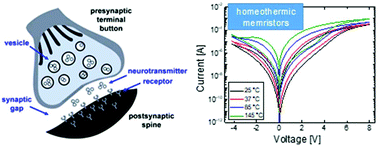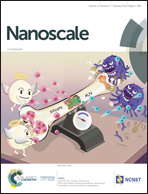Neuronal dynamics in HfOx/AlOy-based homeothermic synaptic memristors with low-power and homogeneous resistive switching†
Abstract
We studied the pseudo-homeothermic synaptic behaviors by integrating complimentary metal–oxide–semiconductor-compatible materials (hafnium oxide, aluminum oxide, and silicon substrate). A wide range of temperatures, from 25 °C up to 145 °C, in neuronal dynamics was achieved owing to the homeothermic properties and the possibility of spike-induced synaptic behaviors was demonstrated, both presenting critical milestones for the use of emerging memristor-type neuromorphic computing systems in the near future. Biological synaptic behaviors, such as long-term potentiation, long-term depression, and spike-timing-dependent plasticity, are developed systematically, and comprehensive neural network analysis is used for temperature changes and to conform spike-induced neuronal dynamics, providing a new research regime of neurocomputing for potentially harsh environments to overcome the self-heating issue in neuromorphic chips.



 Please wait while we load your content...
Please wait while we load your content...